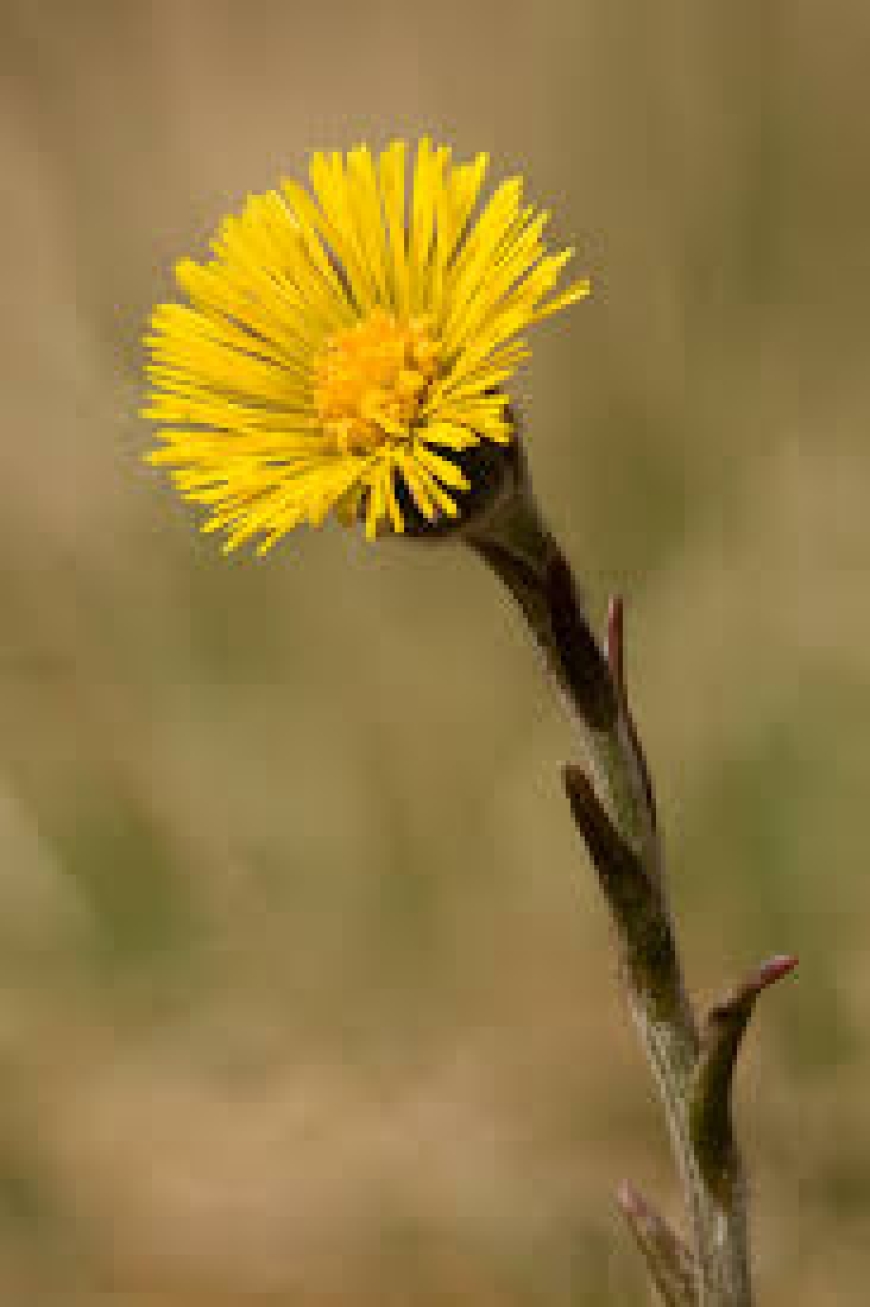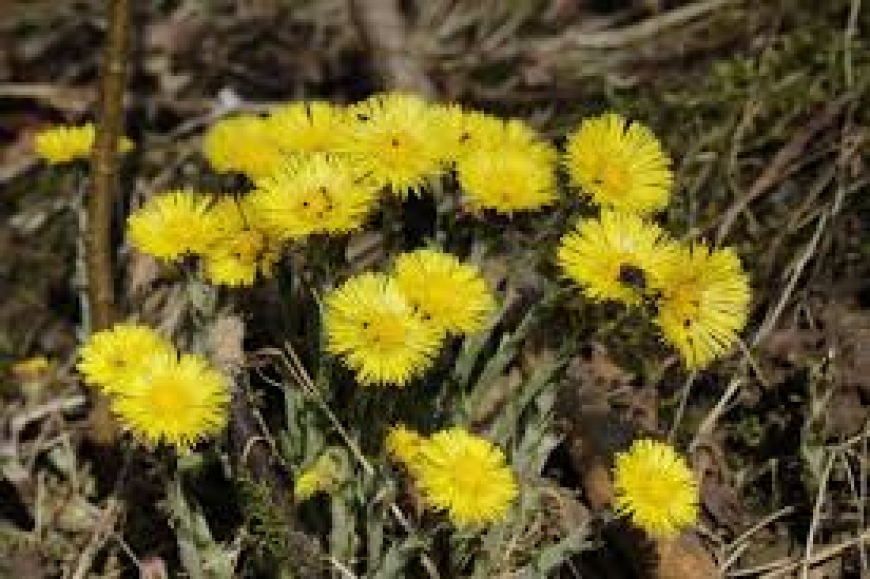



Eye Candy, Cough Syrup, and Early Flowers
After so many months of winter whiteness, it’s a relief to watch the snow recede at last. We’re always grateful for the spring melt, even though the loss of snow cover gives way to a mostly brown world: brown grass, sand everywhere along the roads, and brown needles under the pines. Not to mention the brown leaves we missed last fall, and maybe the dog poop that had built up, mercifully hidden under the snow. The few sepia-toned weeks after the white stuff disappears, but before trees and grass wake up, can be visually bleak.
That’s probably why I’m always so happy to see the bright yellow flowers of coltsfoot emerging in clumps from muddy roadside ditches, rail embankments, and other neglected places. These tiny sunbursts do a lot to dispel my winter eye fatigue. Coltsfoot flowers look kind of like mini-dandelions. They have the same colour and composite structure. The odd thing is that they emerge before any leaves come out.
Although native to Europe and Asia, coltsfoot has naturalized throughout North America. Many non-native plants came here accidentally, but this one was planted by settlers because of its value as a medicinal plant. We don’t know if coltsfoot cheered up the early European settlers during the post-winter “mud season,” but we do know they used it extensively to treat coughs.
Coltsfoot belongs to the genus Tussilago, which is derived from the Latin word for cough – a nod to its efficacy as a cough suppressant. Its common name stems from the fact that its leaves, which emerge after the flowers wither away, resemble a horse’s hoof.
Coltsfoot flowers and leaves are most often taken as a tea to help stop coughs, or boiled down and sweetened to make a concentrated syrup. Surprisingly, it is sometimes smoked in small amounts for fast relief. Pliny the Elder (think Socrates, but Roman instead of Greek and slightly less ancient) treated his asthma by inhaling the smoke of dried coltsfoot leaves and flowers. In an ironic and tragic twist, Pliny died of smoke inhalation during the eruption of Mount Vesuvius.
There was a period of time in Europe when the coltsfoot flower was the symbol for an apothecary, or early pharmacy – the blossom was virtually synonymous with healing. And today, following a tradition that dates back thousands of years, many Chinese people still use commercial cough syrup made with coltsfoot.
It’s common to assume that plant-based remedies are benign. The truth is that herbal medicine is nothing to sneeze at. Think about digoxin, nicotine, caffeine and THC, to name but a few naturally-occurring but potent chemicals. Because herbal medicine can possibly interfere with prescription drugs or exacerbate health conditions, please consult your doctor before using herbal remedies. (In other words, please don’t sue me.)
Speaking of legal liability, there has been concern in recent times about the safety of ingesting coltsfoot. Researchers have documented an increase in liver cancer among rats that ate coltsfoot. To be fair to coltsfoot (if not to the poor lab animals), these rats were fed a diet of up to 16% coltsfoot flowers, every day for 600 days. The takeaway message: Don’t eat a big coltsfoot salad for two years straight, and you’ll be just fine. Problem solved.
However, the same study found that the aforementioned cancer risk was due to a single compound called senkirkine that it (the plant, not the study) produced. Last I heard, German researchers were working to develop a coltsfoot strain that’s largely free of that chemical.
Making cough syrup from coltsfoot is best done under the supervision of an herbalist. On the other hand, using it as a tonic for the spirit need not involve medical professionals. I encourage everyone to keep an eye out (figuratively, please) for these splashy yellow flowers in April and May.

